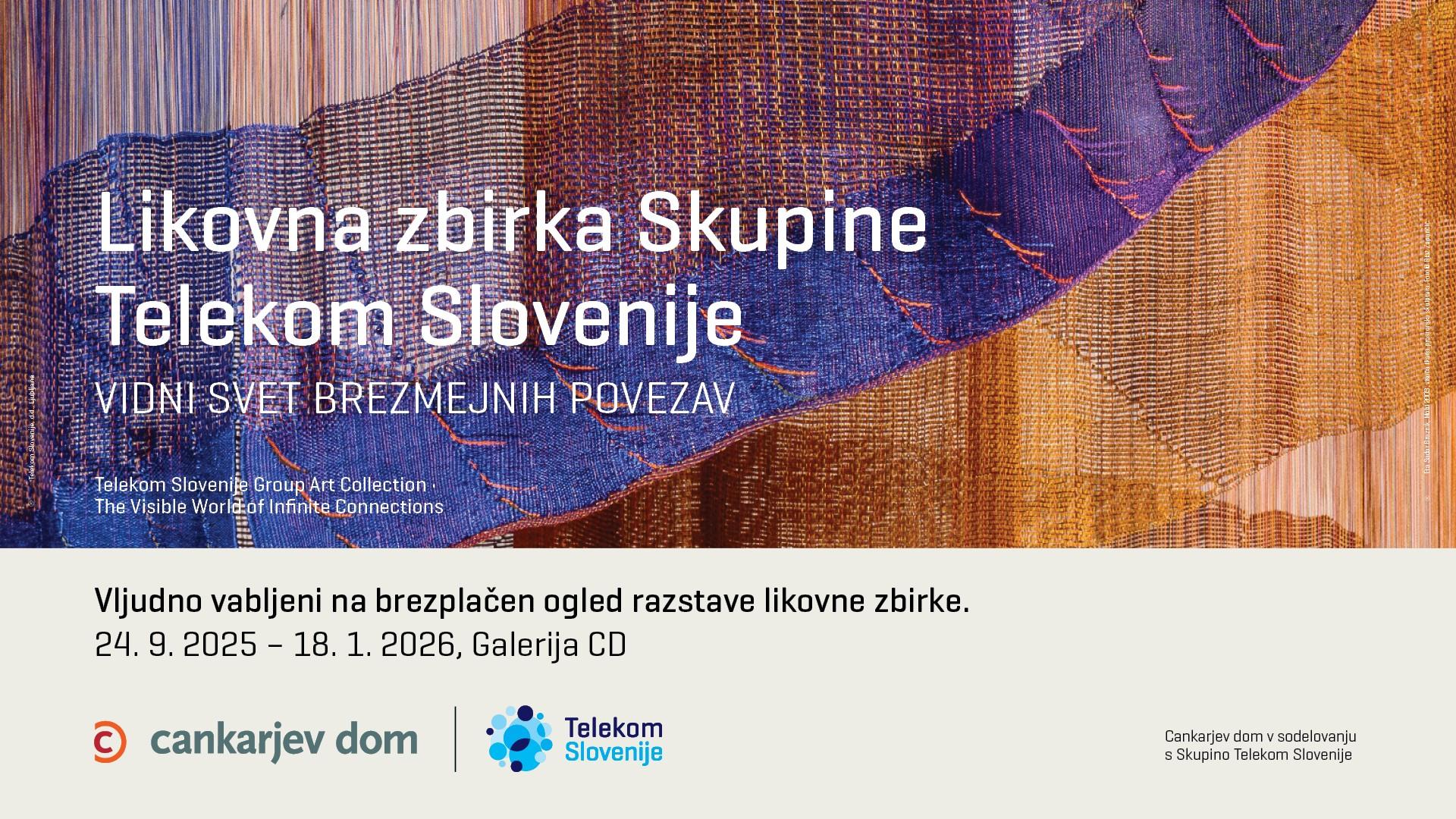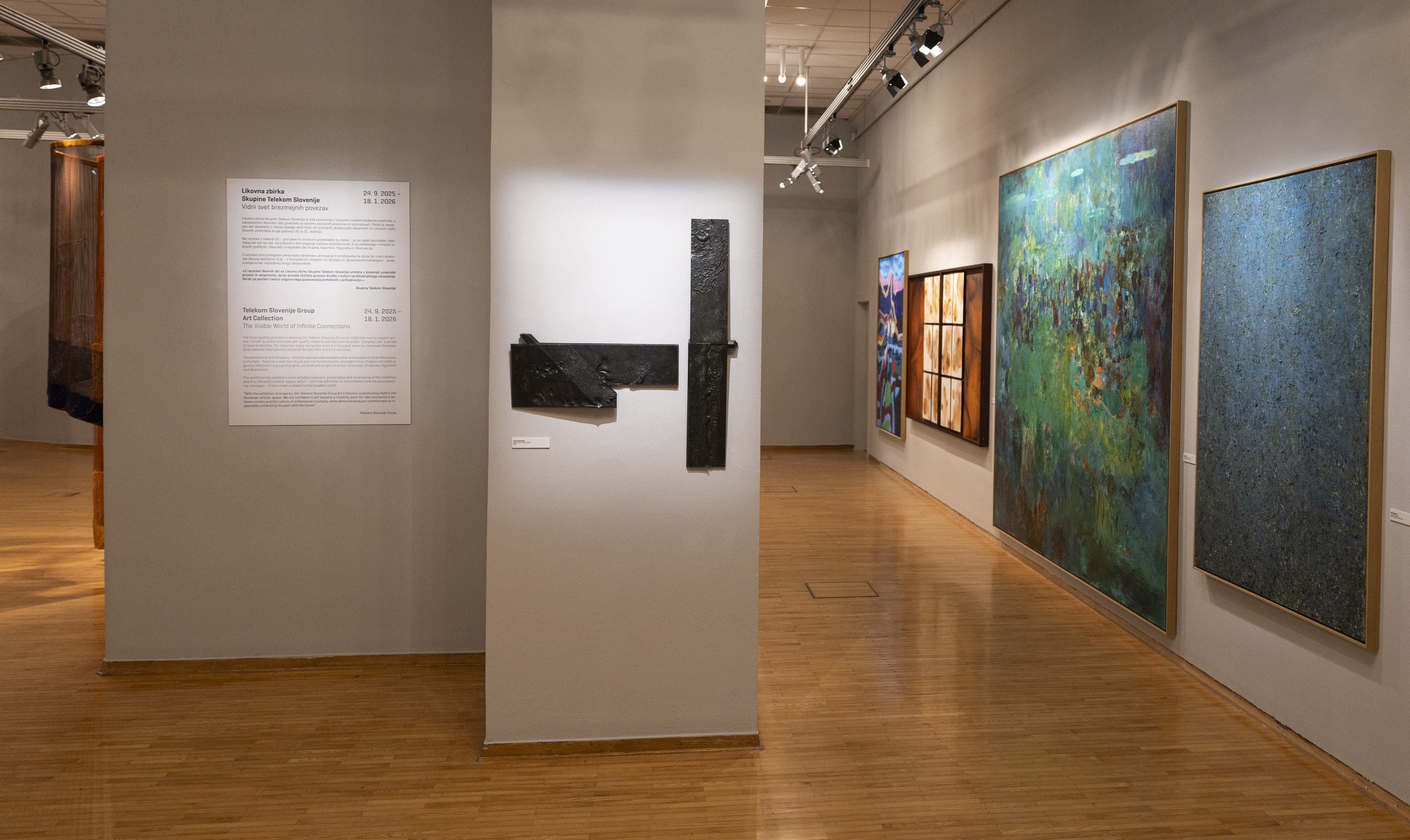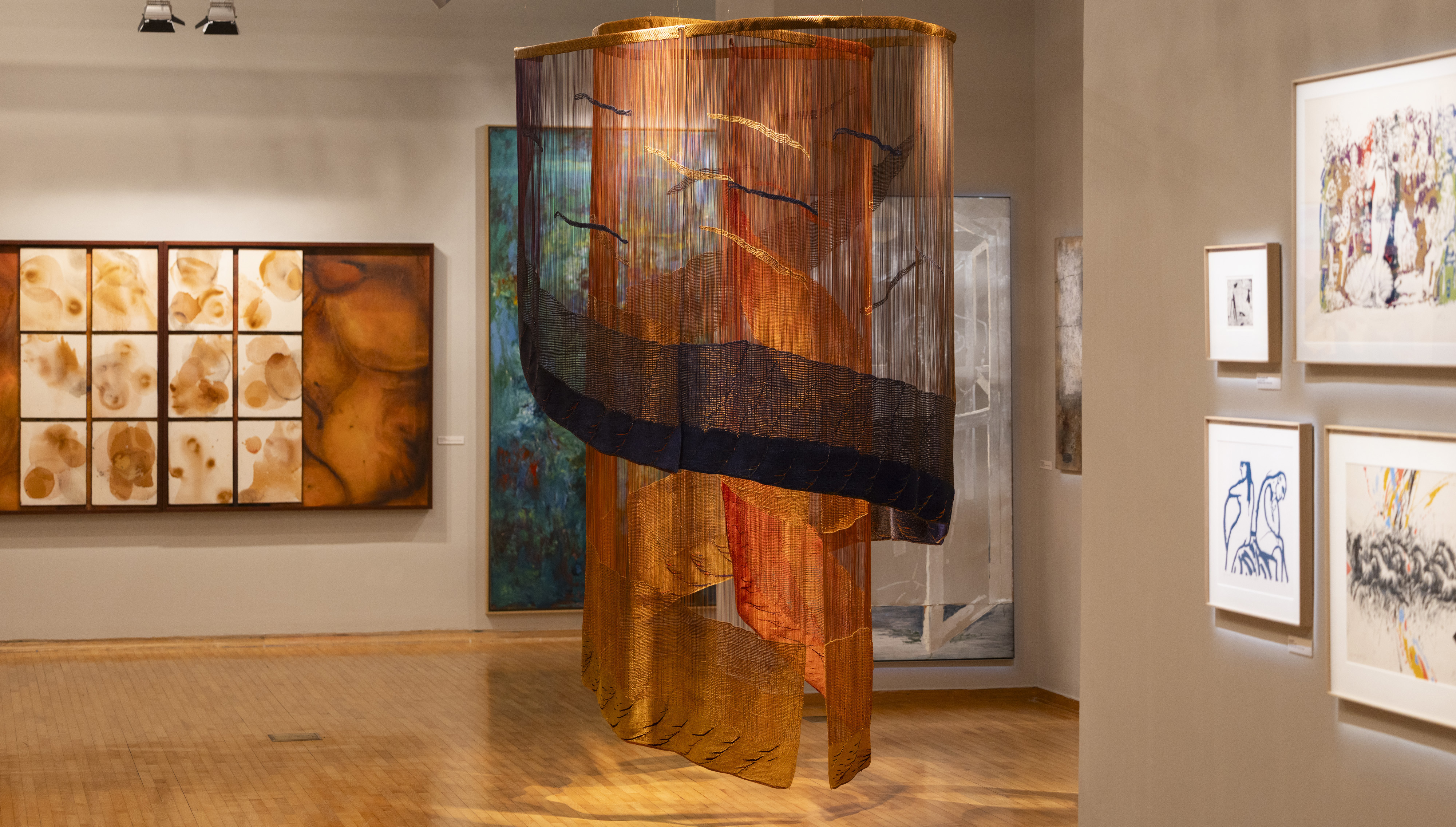Telekom Slovenije d.d.
Kako bi se odzvali vi, če bi v kinodvorani, ob začetku predpremiernega predvajanja filma, nekaj posameznikov kljub opozorilu uporabljalo svoj mobitel? Kaj bi storili, če bi kdo film na skrivaj snemal? Ali pa, če bi se nekdo na mobitel dejansko oglasil in ne bi prekinil pogovora? Obiskovalci predpremiere filma Pozno poleti (Nakon ljeta) režiserja Danisa Tanovića v Cankarjevem domu so vse to dejansko doživeli. Z vami delimo posnetke dogajanja.
Main sponsor
Telekom Slovenije Group Art Collection
The Visible World of Infinite Connections


Until 18 Jan 2026
Admission free
Compiled over a period of several decades, the Telekom Slovenije Art Collection today comprises more than a thousand works: graphic prints, paintings, sculptures, as well as some spatial installations and public sculptures by renowned Slovenian and international artists of the 20th and 21st centuries. The exhibition, which will be on public view for the first time, features one hundred works selected by the exhibition's curator, museum councillor Aleksander Bassin.The exhibition is arranged in four chapters – focusing on motifs or genres linking a group of graphic, pictorial and sculptural works: Landscape, Sculpture, Figuration and Abstraction. About half of the works on display are by renowned deceased, mostly Slovenian artists, while the other half are contemporary artists of the middle and older generations. The wide array of artistic expressions, genres, techniques and styles testifies to the sheer scope of this art collection, the social responsibility and the support Telekom Slovenije has offered several generations of artists. In this spirit, the exhibition partners, Cankarjev dom and the Telekom Slovenije Group, have decided to provide free admission to the exhibition.
Exhibition curator: Aleksander Bassin, museum councillor
Exhibition layout: Dorian R. Spanzel, Studio 84
Production and framing of artworks: Studio & Galerija Černe
The curator of the exhibition, Aleksander Bassin, points out in the exhibition catalogue that “The landscape genre first follows an impressionist vision, succeeded by a mystic interpretation of landscape, the wide colour spectrum of the Primorska region, the Rousseau-esque call to a romantic return to nature, the intensity of autumnal colouration, summery moods and a veiled, exotic sense of pure nature. Sculpture varies between indoor and outdoor plastic form in the light of abstraction and the transition into new figuration. Pictorial abstractionism is the dominant feature in the eternal struggle between objective – non-objective art, with the latter ranging from lyrical and geometric abstraction to new ornamentation.”







